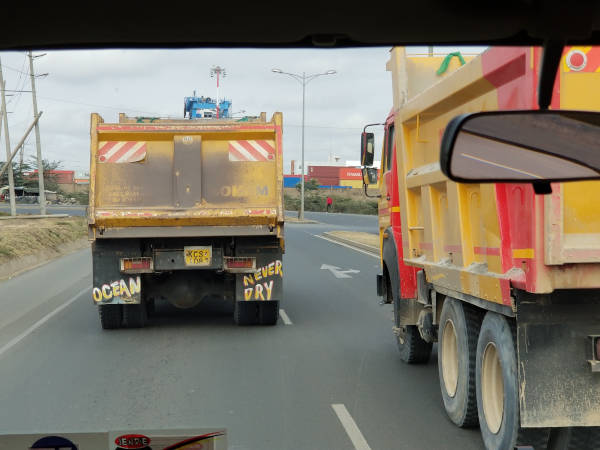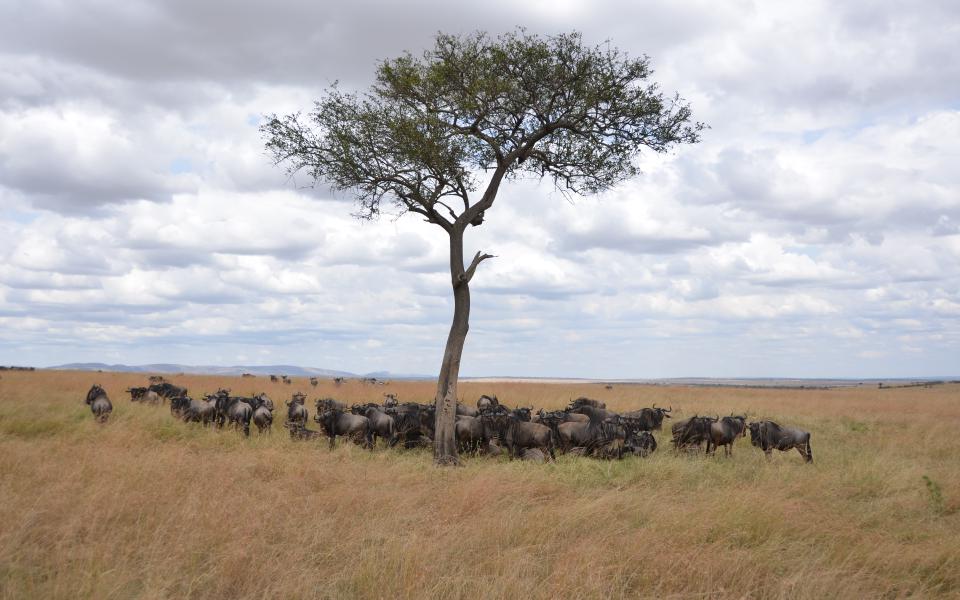Kenya Safari Trip
Reading time: 5 minutes
August 15, 2022
My good friend Jai and I took a trip out to Kenya to go on a safari tour. Wow, what an experience - first time in Africa, first time seeing the animals that fascinated us as kids in the wild, first time experiencing Kenyan culture, etc. The focus of the trip was the safari experience, of seeing the animals, particularly the big 5, and we certainly maximized our limited time of about two and a half days and had a great time.
The tour operator
We went with African Adventure Specialists on a private tour, and stayed at the Keeborok lodge inside the Masai Mara reserve. Everything went smoothly, highly recommend them.
Our driver, Peter, was just all-around great, and deserves a paragraph of praise. Safari drivers certainly require some level of certification, as well as solid driving skills. But Peter took it to another level. When I get in a groove (or also anxious mode), I can come up with a ton of questions; Peter, calm and always in the moment, was knowledgeable about seemingly everything from the animals and plant life to the fine details of life in Kenya, including the politics and culture. Plus with a relaxed and friendly personality!
Safari
The safari itself was a thrilling experience. The savannah landscape, deep blue skies, mountains in the distance, was just beautiful. It’s peaceful and for stretches almost empty of any animals; but of course they are there, and in the back of our mind we know that every now and then there is some serious predator-prey action happening somewhere. Many of the animals are in groups, and you’ll see a wide variety of them.
As we went in July, we came across many zebras, antelopes, and wildebeest that had trekked up from Tanzania for their seasonal migration. The predator cats were harder to spot, but we did come across some lions and a few cheetahs. The leopards were harder to find, but there was one nestled up in a tree enjoying a fine meal. Other animals we saw included hippos, crocodiles, vultures, elephants, and giraffes. Lots of great photo opportunities.
Peter shared some interesting side details that struck me. He mentioned how the Masai farmers would bringing their animals into the reserve at night to graze, due to arrangements where they were not allowed to have the animals graze on their own land. Probably worthy of another blog post, which perhaps someone has written about. Another point Peter mentioned was how plots of grass would be burned, after the migratory animals had shifted back down to Tanzania, in order to kill off the ticks. Part of the issue is that the animals used to migrate further up north in Kenya, but due to development and other factors most now go only as far north as the Masai reserve area.
The lodge
After a full day, we returned to the Keeborok lodge. It’s charming and well maintained, with nice wood details both in the room and the main building, kept comfortable by an exceptionally friendly and courteous staff. On the grounds there is a pond with hippos and a nice viewing area. Being open, wild animals can come through, mainly at night, but a staff member is there to accompany you after 7pm. Still, good to keep an eye out for things like zebra droppings. The meals are arranged as a buffet, with a number of options including Indian dishes. There was also a pasta station (great for vegans like Jai).
Desi feeling
 Just thought it worth mentioning - for Indians (and second gen diaspora like myself),
I think Kenya should feel quite like home. Just like in
India, the driving is British, with similar Tata trucks and colorful shops at
various points along the way. Not just at the lodge, but also at a hotel we stayed at on our
first night, there were plenty of satisfying Indian food options.
Plus we saw a number of Indian tourists, as well as a few desi residents.
Just thought it worth mentioning - for Indians (and second gen diaspora like myself),
I think Kenya should feel quite like home. Just like in
India, the driving is British, with similar Tata trucks and colorful shops at
various points along the way. Not just at the lodge, but also at a hotel we stayed at on our
first night, there were plenty of satisfying Indian food options.
Plus we saw a number of Indian tourists, as well as a few desi residents.
Some general tips
- Bring a nice camera with a zoom lens (my 18-200mm zoom lens worked out well) and binoculars
- The drive from Nairobi to Masai Mara is about five hours
- It’s mostly a two lane highway, but smooth and generally pleasant
- Along the way you will stop by a scenic view onto the Rift Valley
- Also, you will stop at a few souvenir shops with clean restrooms
- Souvenirs can be expensive
- I was able to negotiate somewhat
- Being a nice guy, I was torn between offering a responsible price and my budget
- Jai thinks I overspent
- The weather is really nice in July
- Sunny and upper 70s in the day, 50s in the night
- Good to pack a light jacket for the night
- I wonder if it’s the same nice temperature all year round?
- Health
- To be safe, we wore InsectShield peremethrin treated clothes. No mosquito bites but also we were mainly in the land cruiser.
- In general, it’s good to check the CDC website and make a travel medicine appointment beforehand.
- Seasonal tips
- To catch the animals crossing the river, we were told August and September are better months. But there is some year to year variation.
- The rainy season is slow. But according to Peter, the animals don’t like the rain either, or specifically wet grass, and so they’ll hang out on the road. Might be an interesting experience.
- The Rhino
- It’s unlikely that you will catch a sighting of the Rhino in the Masai Mara
- If you want to get the Rhino “checked off”, you have a good chance of spotting them in the National park of Nairobi. Just make sure to budget time for it; we cut it a bit close with our departing flight.
- Tipping
- Good idea to research beforehand
- If the service is good, and it very likely will be, it’s good to err on the generous side (including if you don’t meet your “safari goals”)
